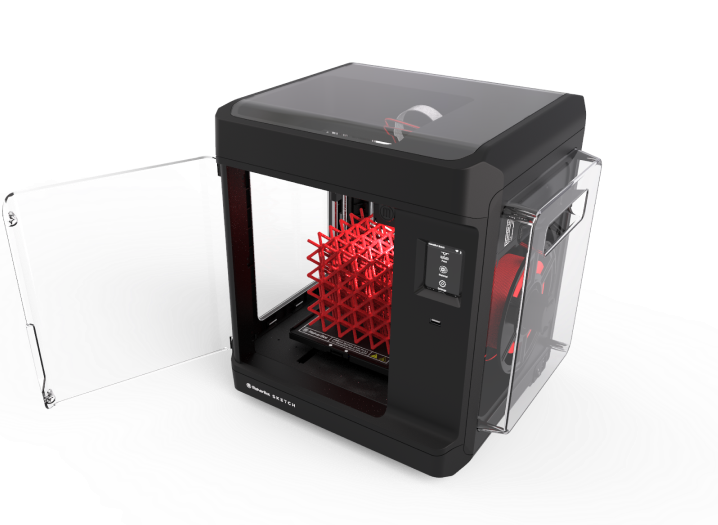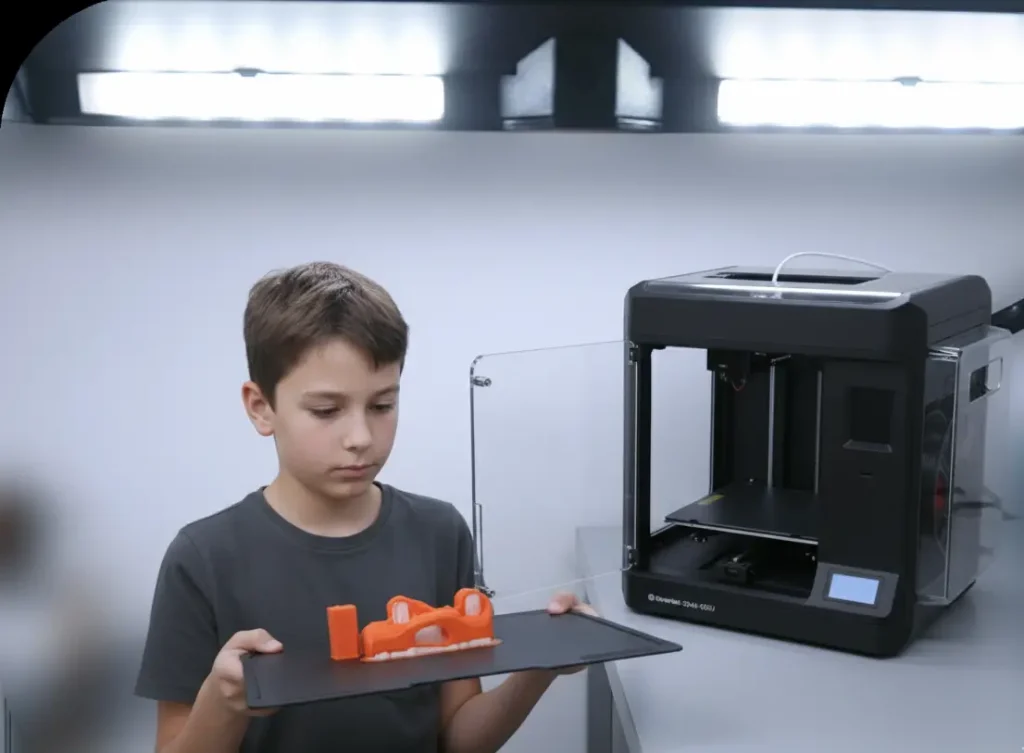
3D printing in education is no longer just a trend—it’s a key tool for hands-on learning. The MakerBot Sketch Standard 3D Printer is built with classrooms in mind, offering an ideal mix of reliability, safety, and simplicity. Whether you’re a teacher introducing STEM to students or a lab manager running multiple printers, the Sketch Standard streamlines the entire experience—from setup to print.
The MakerBot Sketch 3D Printer offers safe, easy, and reliable 3D printing for classrooms. Ideal for students and educators, it supports PLA materials and seamless software integration for hands-on learning.


Designed for Education, Built for Reliability
The MakerBot Sketch Standard belongs to MakerBot’s education-focused Sketch lineup. It’s a fully enclosed FDM 3D printer designed to deliver consistent results while maintaining classroom safety. The printer’s ease of use, intuitive interface, and integrated ecosystem make it an excellent choice for teachers and students who want to explore design and 3D modeling without the need for complex setup or maintenance.

With a 150 × 150 × 150 mm (5.9 × 5.9 × 5.9 in) build volume and a layer resolution of 100–400 microns, the Sketch Standard is tuned for dependable, high-quality prints—perfect for classroom projects, prototypes, and educational models.
Key Features & Benefits
1. Safe, Enclosed Design
The Sketch Standard features a fully enclosed frame with HEPA and carbon filtration, ensuring clean, safe operation in shared learning spaces. This makes it ideal for classrooms and student labs.
2. Easy Setup & Calibration
Automatic mesh calibration and adjustable first-layer settings eliminate common setup frustrations. Even first-time users can start printing within minutes.
3. Reliable, Heated Build Plate
The removable, flexible build surface simplifies print removal and reduces the risk of damage to prints or the bed. The heated plate ensures excellent adhesion of the first layer.
4. Connectivity Options
Supports USB, Ethernet, and Wi-Fi connections, allowing seamless file transfers and cloud printing. Teachers can easily manage multiple printers at once using MakerBot CloudPrint.
5. Integrated Camera
The 2-megapixel camera enables real-time remote monitoring of prints—perfect for classrooms or labs where multiple projects run simultaneously.
6. Optimized for MakerBot Materials
The Sketch Standard works best with MakerBot PLA and Tough PLA filaments. These are safe, reliable, and provide excellent print consistency.
7. Educational Ecosystem
MakerBot offers access to lesson plans, design thinking curriculum, and cloud management tools, making it a comprehensive all-in-one 3D printing solution for education.
Technical Specifications
| Specification | Details |
|---|---|
| Print Technology | Fused Deposition Modeling (FDM) |
| Build Volume | 150 × 150 × 150 mm (5.9 × 5.9 × 5.9 in) |
| Layer Resolution | 100–400 microns (optimized for 200 microns) |
| Nozzle Diameter | 0.4 mm |
| Filament Diameter | 1.75 mm |
| Compatible Materials | MakerBot PLA, MakerBot Tough PLA |
| Build Plate | Heated, flexible, removable surface |
| Camera | 2 MP for live monitoring |
| Connectivity | USB, Wi-Fi, Ethernet |
| Operating Temperature | 15–30 °C (59–86 °F) |
| Storage Temperature | 0–55 °C (32–131 °F) |
| Dimensions | 17″ × 14″ × 17″ (W × D × H) |
| Weight | 11.8 kg (26 lb) |
| Power Requirements | 100–240 V, 50–60 Hz, 2.7–1.3 A |
| Software | MakerBot CloudPrint, Digital Factory, Cura 5.9 |
| Supported File Types | .makerbot, .stl, .obj, .step, .iges |
| Safety Certification | UL, CE, FCC, IEC/EN/UL 60950-1, 62368-1 |
Why It’s Great for Classrooms
The MakerBot Sketch Standard is built for educators who want an easy entry point into 3D printing.
- The PIN lock and safety enclosure protect students.
- The mesh bed leveling ensures consistent prints, even across long sessions.
- The Digital Factory software lets teachers manage multiple students’ prints with ease.
This makes it ideal for STEM programs, design classes, and makerspaces that need a reliable, low-maintenance printer.
Drawbacks & Considerations
While the Sketch Standard shines in educational settings, it’s not perfect for every user:
- Material Limitations: It supports only PLA and Tough PLA, so advanced users needing ABS, PETG, or nylon will require a different printer.
- Smaller Build Volume: 150 mm³ is enough for most classroom projects, but might feel restrictive for large prototypes.
- Proprietary Ecosystem: Integration with MakerBot’s software and materials ensures reliability but limits flexibility for tinkerers or open-source enthusiasts.
Competitor Comparison
| Printer | Build Volume | Material Support | Best For |
|---|---|---|---|
| MakerBot Sketch Standard | 150 × 150 × 150 mm | PLA, Tough PLA | Classroom & Education |
| FlashForge Finder 3 | 190 × 195 × 200 mm | PLA, PETG | Hobbyists & Schools |
| Dremel DigiLab 3D45 | 255 × 155 × 170 mm | PLA, PETG, Nylon | Advanced Education |
| Creality Ender-3 V3 | 220 × 220 × 250 mm | PLA, PETG, TPU | DIY & General Use |

Final Verdict
If your goal is safe, simple, and consistent 3D printing in an educational environment, the MakerBot Sketch Standard is one of the best turnkey options available. It minimizes setup hassles, provides robust safety features, and delivers reliable performance print after print.
While hobbyists or advanced users may want more material flexibility, educators and schools will find that the Sketch Standard’s ease of use, classroom tools, and safety features make it a substantial long-term investment.
Q: What is the build volume of the Sketch / Sketch Standard?
150 × 150 × 150 mm (5.9 × 5.9 × 5.9 in).
: What printing technology does it use?
Fused Deposition Modeling (FDM).
What materials are compatible with the Sketch?
MakerBot’s PLA and Tough PLA filaments.
What is the nozzle diameter?
0.4 mm.
What is the layer resolution range?
100 to 400 microns.
How does the build plate work?
It utilizes a heated, flexible, and removable build surface to facilitate adhesion and removal.
Which connectivity options are included?
USB, Wi-Fi, and Ethernet support.
What software / file types does it support?
Supports MakerBot and STL formats out of the box (plus other formats via the ecosystem).
Is the Sketch fully enclosed or open frame?
It has an enclosed design with particulate filtration for safety in classroom environments.
Where is the Sketch commonly used?
It is designed for classroom and educational settings, allowing easy use by teachers and students.





